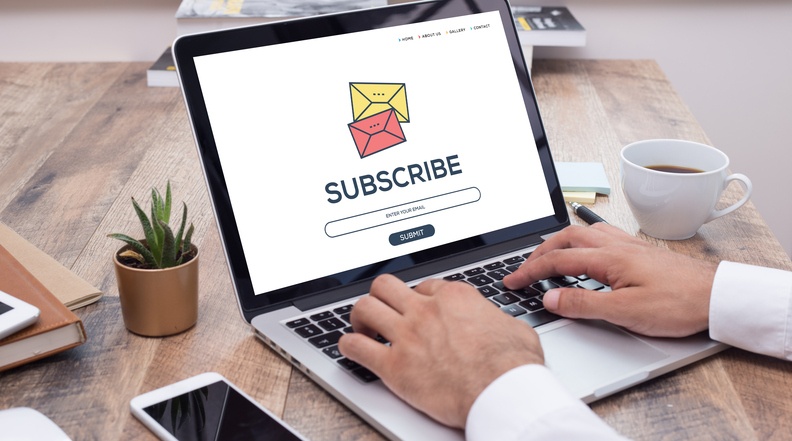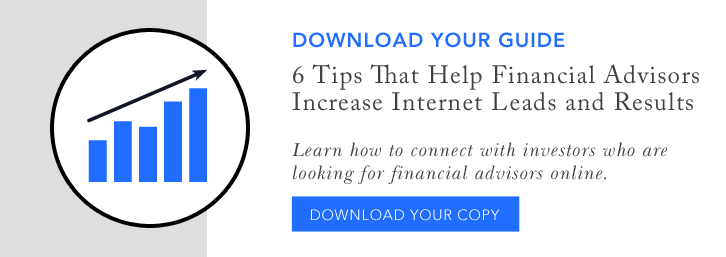Email and Newsletters are Key in Financial Advisor Marketing
Can you remember when there wasn’t email? It has only been in existence since the early 1990s, but, for all practical purposes, it has become the dominant form of written communication and has all but eclipsed the U.S. mail as the information conduit for sales and marketing promotions. Businesses have long used email as an effective customer communication tool, combining it with Customer Relationship Management (CRM) software to nurture relationships and generate new sales opportunities. And it’s become an essential tool in financial advisor inbound marketing.
The key to effective email marketing is that it is permission-based. Those who receive emails from a business have opted-in to receive them and now expect to see the email messages in their inbox. When used properly, a customer-contact campaign combining an informational newsletter with periodic emails can improve customer retention while increasing customer traffic into your practice.
The 5 biggest reasons financial advisors cite for implementing a newsletter-email marketing campaign are:
- It’s cheap and efficient. For a small monthly fee, an automated email campaign can be launched and managed.
- It’s an effective way of touching your clients and prospects to provide value and build relationships.
- It enables you to more effectively target your clients by segmenting your list.
- It’s data-driven, so it is easy to monitor and measure for ROI and effectiveness.
- It provides a value-added service that your clients appreciate.
Why It’s Effective
Many marketing and advertising strategies are intrusive. Even emails sent by an unauthorized advertiser or marketer are considered to be spam and get sent directly to a recipient’s trash. But email that has been invited can sail right by the spam detector. With this said, when you get permission to send email, you must ensure that your email messages don’t abuse their welcome and they continue to deliver on your promise to provide value, not just more clutter. There is nothing worse than to find out that the person you’ve invited into your home is a nuisance or a time-waster. As quickly as you are invited to an email inbox, you can be uninvited.
Financial advisors hold a special place in the relationship hierarchy of investors because investors care about their money. While most people don’t care to hear from their doctor or lawyer unless currently involved in a medical or legal issue, people do want to hear from their financial advisor.
Your email communication is an opportunity to cultivate the relationship by demonstrating your professionalism and unique value proposition. Your timely emails will also increase the chances that you will be remembered.
Your clients and prospects are always looking for information that can help them make better financial decisions. Newsletter emails are welcomed by your clients and prospects as long as they meet their specific needs. By segmenting your list, you can provide even more targeted information based on demographics, interests and even the type of financial needs they have. This requires you to know your target markets and the type of information they want.
While it is not possible to target your information to meet everyone’s needs all of the time, there are some things that most investors will always find to be of interest. By providing a mix of interesting and entertaining information, your clients and prospects are more likely to find something of value. By incorporating the information in a newsletter format, they will be able to scan through it until they find the information that is intended for them. Here are some examples of newsletter content:
- Self-authored or third-party articles about your specialty
- Client success stories
- Announcements of new investment products and services
- Investment tips
- Frequently Asked Questions
- Investment myths and facts
- Columns or articles submitted by experts
Your List is Your Lifeblood
If your website has just one purpose, it should be to gather names and emails from your clients and prospects. It is but one more reason why it is important that your website be well-designed to attract high traffic. The payoff is an email list that will enable you to market directly to your clients and prospects. To that end, the most important component of your website is an email update or newsletter subscription box in which your visitors can enter their name, email address and whether they are an existing client.
Here are some list building essentials:
- Add an opt-in subscription box or a link to all of your websites, including your social media sites. On your own website, make sure you provide opt-in opportunities throughout the site, including your home page, your About Us page and your contact page.
- Give them a reason. You need to give people a reason to sign-up. While some people may simply sign up to receive “email updates,” more people will respond if given an incentive for signing up, such as a “free report.” It’s easy to create a simple two- or three-page downloadable report. People feel better about exchanging their email for something of value.
- Stay on the lookout for email addresses. List building is an ongoing process, and it needs to be done organically and incrementally. Every prospective client you meet should be invited to join your list. Continuously promote your newsletter and ask permission to include new leads on your newsletter list.
- Promote your newsletter on your social sites. Whenever you publish a newsletter, announce it on your social media sites by posting an update. You can tweet about it and include an excerpt from your newsletter on Facebook.
- Keep it simple. Make sure the opt-in process is short and simple. All you need initially is their name, email address and status as an existing client. You’ll have opportunities to collect more data later.
- Use an auto-responder. You need an automated system to gather and process the subscriptions. A good auto-responder system will also help you organize and segment your contacts, create campaigns and analyze your data. If your newsletter service doesn’t offer this, you should consider using a software solution such as Constant Contact, MailChimp or Aweber.
How to Launch a Successful Email Marketing Campaign
- Begin with a quality list. Your best list is your client list, and you may also have names and information about other people you have met. These are people you know, who will probably grant you permission to add them to your newsletter list.
- Create the right expectation. Let the people on your list know what they can expect from you in the form of email communications. If it is a newsletter, let them know how often it will be distributed and the kind of information they can expect to receive. Then deliver on those expectations.
- Deliver quality and value. Your email communications, especially your newsletter, should reflect the professional image you want to convey. The information should be timely, relevant, and offer something of value. It is highly recommended that you partner with a financial content provider known for quality content and production.
- Personal contact is key. It is important to combine marketing tactics in order to boost overall results. Have a staff member follow newsletter emails every couple of months with a phone call or a personalized email. Use these opportunities to find out what clients like about the newsletter, what else they’d like to see and if any particular article struck a chord with them.
- Close the marketing loop. Make sure your newsletter and email communications include links to your website, blog, and social media sites. Remember, one of the overall goals of a complete digital marketing strategy is to increase your visibility and enhance your brand.
- Monitor results. The advantage of most Web-based marketing tools is their measurability. With electronic newsletters, you can measure many aspects of your viewership that will tell you how well your newsletters are received.
With the constant flow of messages that people receive today through email, social media and chat sites, as well as the more traditional phone calls and postal mail, the noise has become deafening. But, when people see an email they are expecting, it is probably going to be opened, and the message will get through. Financial advisors who recognize the power of permission-based, inbound marketing will reap large and continuous returns from a revitalized base of clients.


